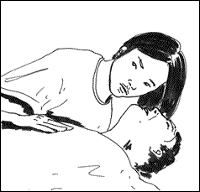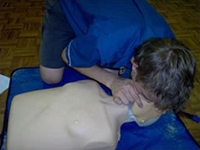CPR Today

Heart action and respiratory effort are absolute requirements in transporting oxygen to the tissues. In other words, if a person can't breathe or if his/her heart can't pump, the body will die. One of the main organs to suffer from oxygen starvation is the brain, which may sustain damage after three to four minutes and irreversible damage after about four to six minutes. Following cardiac arrest, effective CPR enables enough oxygen to reach the brain to delay brain death, and allows the heart to remain responsive to defibrillation attempts.

CPR is taught to the general public because they may be the only ones present in the crucial few minutes before emergency personnel are available. If administered properly, it can save lives, but when done incorrectly, it can interfere with life-saving operations later. Studies from the Seattle Medic One System proved that patients who received CPR started by a bystander had a greater chance for survival than those who did not.
Now, you try. Complete the Think & Click activity by looking at each problem below, thinking about it, and then clicking on the question to reveal the answer.
CPR is a practical skill and needs professional instruction followed up by regular practice on a resuscitation mannequin to gain and maintain full competency. Training is available through many commercial, volunteer, and government organizations, such as the American Red Cross or American Heart Association.